Common Obstacles Found in British Records
and How to Overcome Them
5-6 minute read
By The Findmypast Team | June 19, 2017

Kate Eakman is a Senior Researcher for Legacy Tree Genealogists, a worldwide genealogy research firm with extensive expertise in breaking through genealogy brick walls. To learn more about Legacy Tree services and its research team, visit https://www.legacytree.com/.
For most genealogists, discovering a reference to the ancestor you are searching for and then learning that there are digital copies of that document is like Christmas and your birthday all wrapped in one. Unfortunately, just like that six-pack of tube socks from Grandma was a major disappointment, the actual documents we were so eagerly anticipating can also sometimes be a grave disappointment when we see them.
Some documents are difficult to read because of the handwriting, or the use of Latin or another unknown language, or fire or water damage has made them almost or completely illegible. However, unlike that package of tube socks, disappointment over of a document doesn't have to be permanent. There are a number of ways to overcome the obstacles of the condition or legibility of a document so that you can make the most of your find and learn more about your ancestors.
Let's face it, most adults do not have the best handwriting. In spite of the best efforts of our third-grade teachers who labored to teach us the Palmer method of penmanship, many of us have nearly illegible handwriting, and some of us can't even read our own cursive.
Often, the handwriting we see in old documents is just as bad as ours, or even worse. The characters are odd and unfamiliar, the handwriting is cramped or difficult to read, and sometimes the writing on the back of the page bled through to the other side, making it very difficult to read.
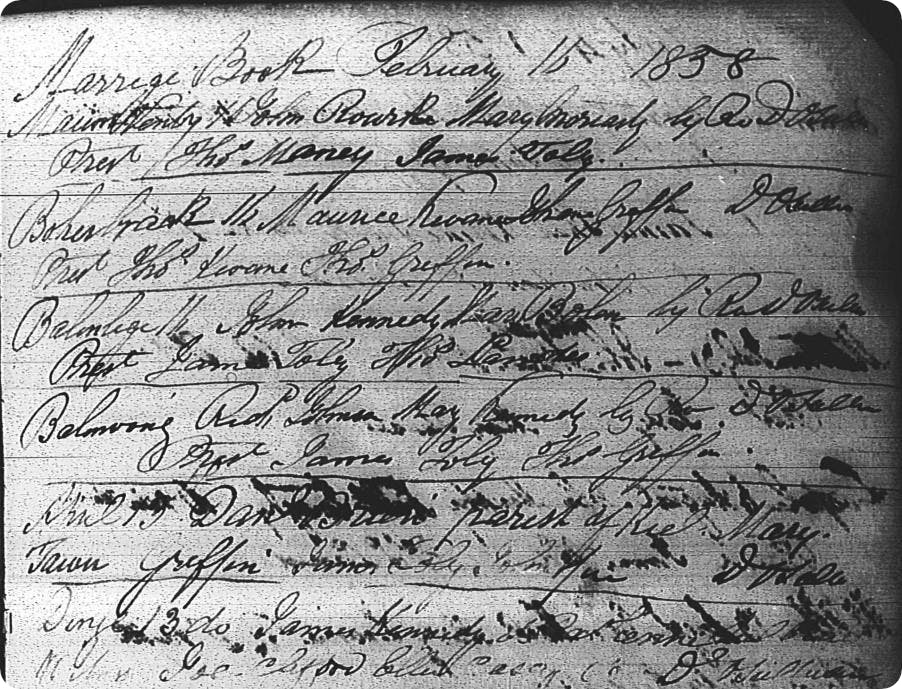
Hard-to-read handwriting, Marriage Book, Dingle, County of Kerry, Catholic Parish Registers at the National Library of Ireland, http://registers.nli.ie, accessed June 2017.
Sometimes simply adjusting the brightness, tone, or color of an image can make it easier to read. For other documents, you might want to make a paper copy of the record and then use a colored pen or pencil to trace over the letters.
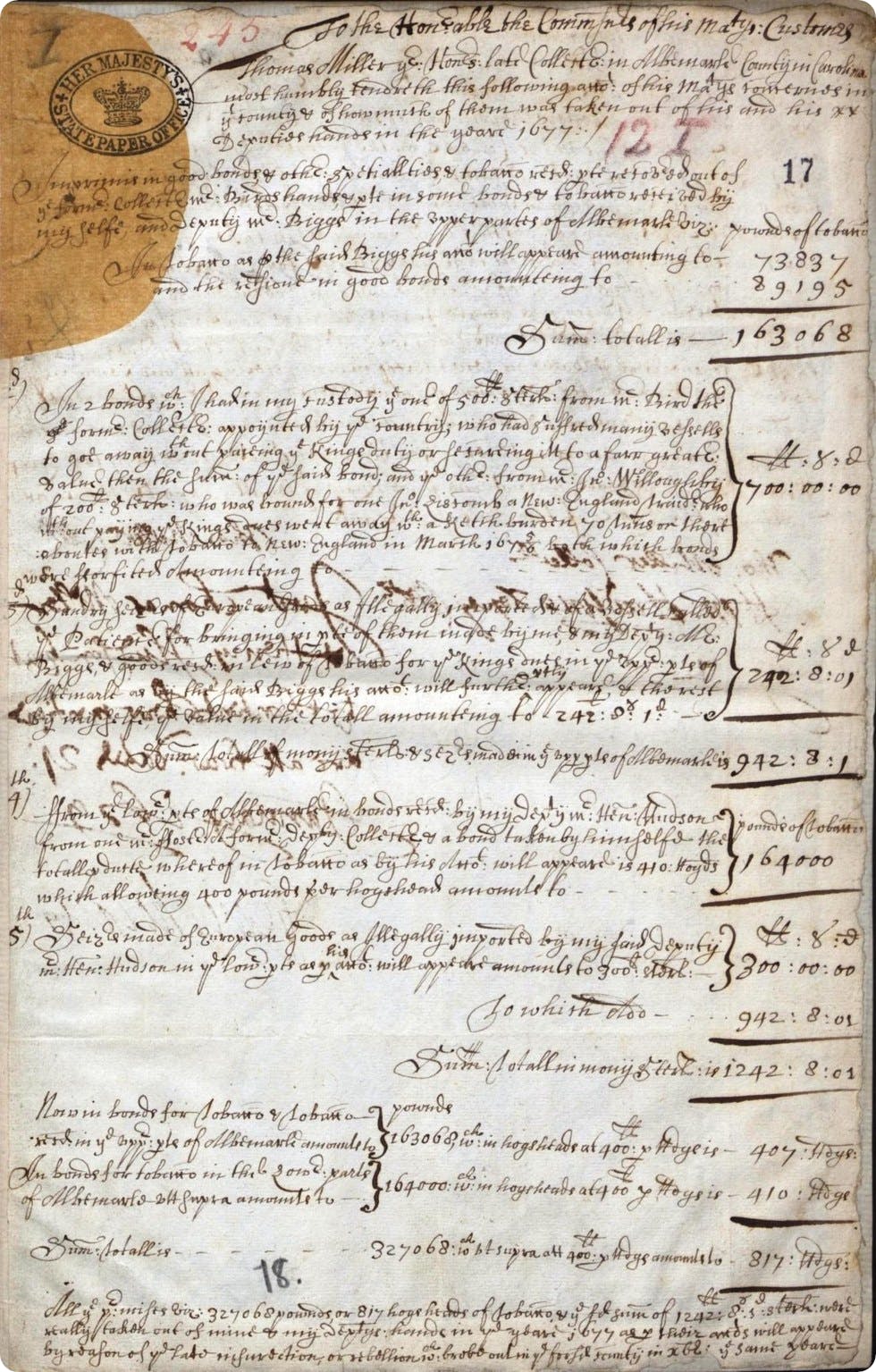
An example of ink bleeding through from the other side, Early Immigration to Barbados, Findmypast, subscription database, accessed June 2017.
Understanding what it is you are reading provides you with a framework for your reading. A birth record is unlikely to include the names of the neighbors' estates, and a tax roll probably will not include any dates of birth.
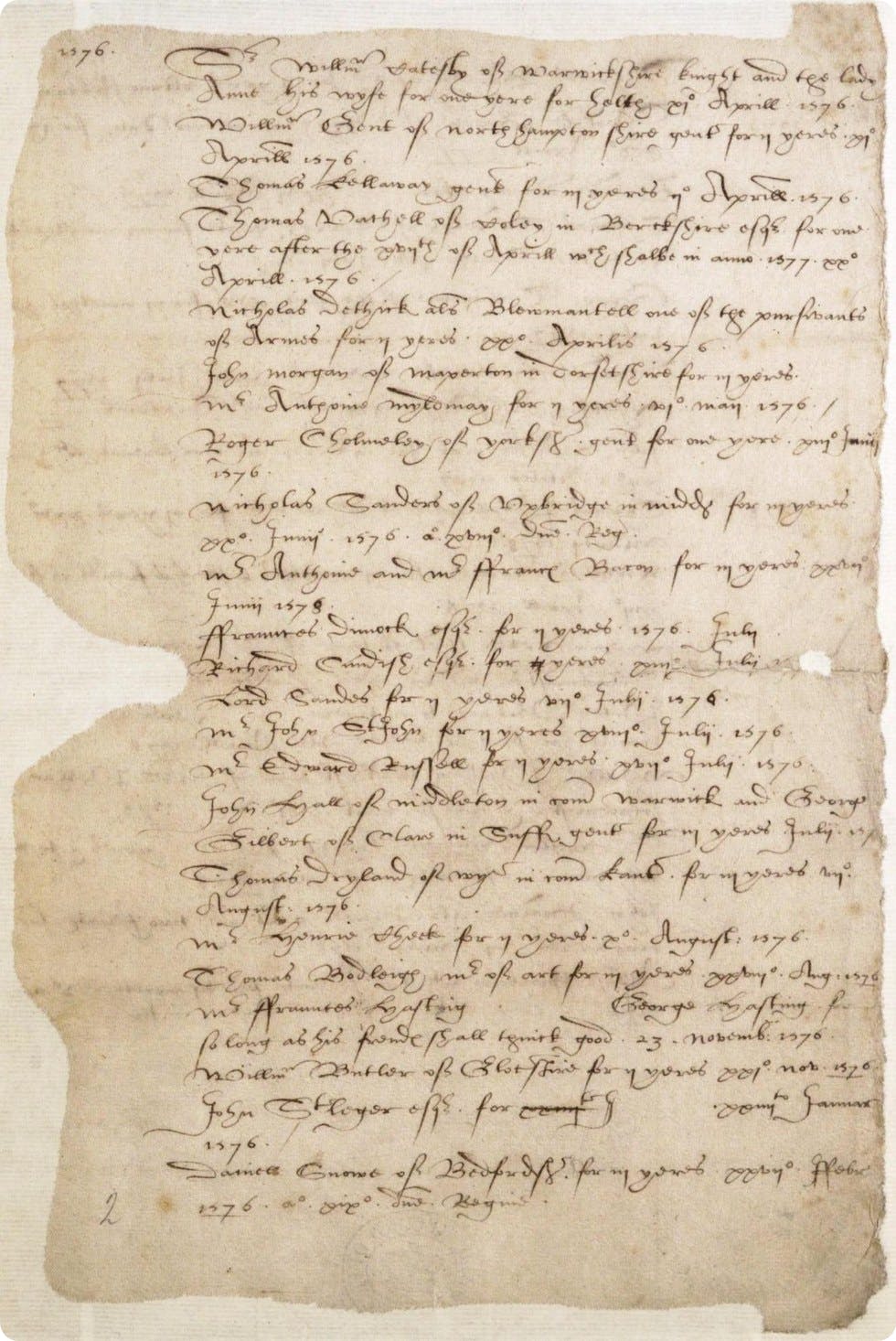
An example of unfamiliar characters and spelling, Register of Licenses to Pass Beyond the Seas, Findmypast subscription database, accessed June 2017.
The British National Archives has an excellent online paleaography tutorial for English documents written between 1500 and 1800. Alexandra Edmondson's blog post offered some practical tips for reading old handwriting from any era. FamilySearch's Wiki can direct you to other online resources for reading old English handwriting.
If your long-desired document turns out to have been written in Latin, not English, all is not lost. A simple register of names, dates, and places can be translated by means of GoogleTranslate or any other translation program, although more complicated documents may require the translation program in conjunction with a good Latin/English dictionary.
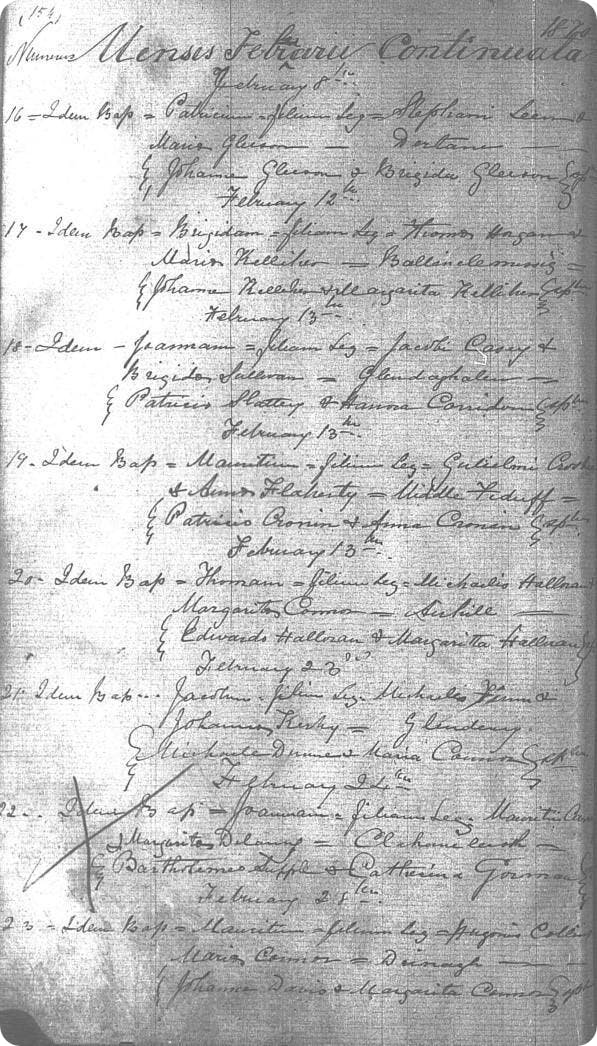
Baptismal record in Latin, Ballyheigue, County of Kerry, Catholic Parish Registersat the National Library of Ireland, http://registers.nli.ie, accessed June 2017.
FamilySearch has a list of genealogically-related Latin words as well as Latin abbreviations, months, and a selection of other words you might encounter in a variety of civil and ecclesiastical documents. Jim Shaughnessy's recent blog offers a useful list of Latin abbreviations for the genealogist. Knowing the Latin abbreviations for "died without male offspring" and "died without surviving offspring" can be crucial to your research.
But what can be done when the document simply doesn't exist, such as every page of the Irish Census for the years 1861, 1871, 1881, and 1891, or 80% of the records for United States Army personnel discharged between 1 November 1912 and 1 January 1960? In this case, a colored pencil and a dictionary won't do much good.
When the document set has been completed destroyed it is necessary to find some other replacement, no matter how inferior. A little information is better than no information. Birth, marriage, and death records, newspaper articles, deeds, tithe applotment books, and wills are just some of the records we can use to fill in the gaps left by the destruction of four consecutive census reports. In place of the missing U.S. military records, the National Archives can often pull together some information from Veterans Administration (VA) claims files, individual state records, Multiple Name Pay Vouchers from the Adjutant General's Office, Selective Service System registration records, pay records from the Government Accounting Office, as well as medical records from military hospitals.
If a fragment is available, such as the one pictured below, it is sometimes possible to reconstruct the missing information by paying careful attention to the column headings indicating what would have been recorded in each space and comparing the visible letters with expected words and phrases. Although the given name of Clyde's wife has been torn from the section noting that her maiden name was Kershaw, Clyde listed her as his next-of-kin in the previous section, so we know that she was Minnie Kershaw Fletcher. The section of the form for children has only the final portion of a name "---land" and the word "Boy" suggesting that Clyde and Minnie's firstborn was Roland Fletcher.
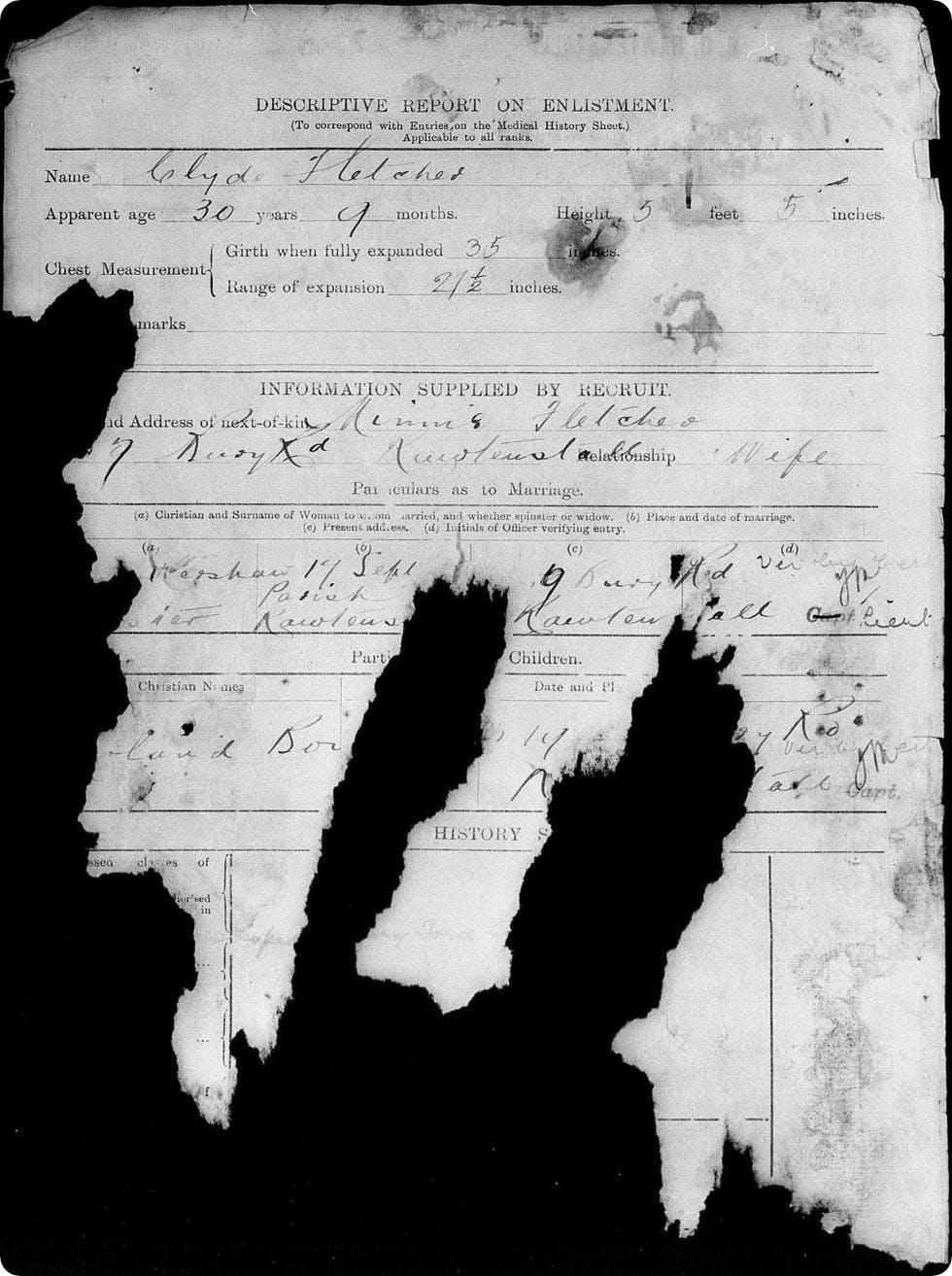
Partially torn page of a soldier's enlistment obscuring the names of his wife and child or children, British Army Service Records, Findmypast subscription database, accessed June 2017.
We can verify the accuracy of our conclusions by reviewing an earlier copy of this page which appears to have been made before the damage was done to the document:
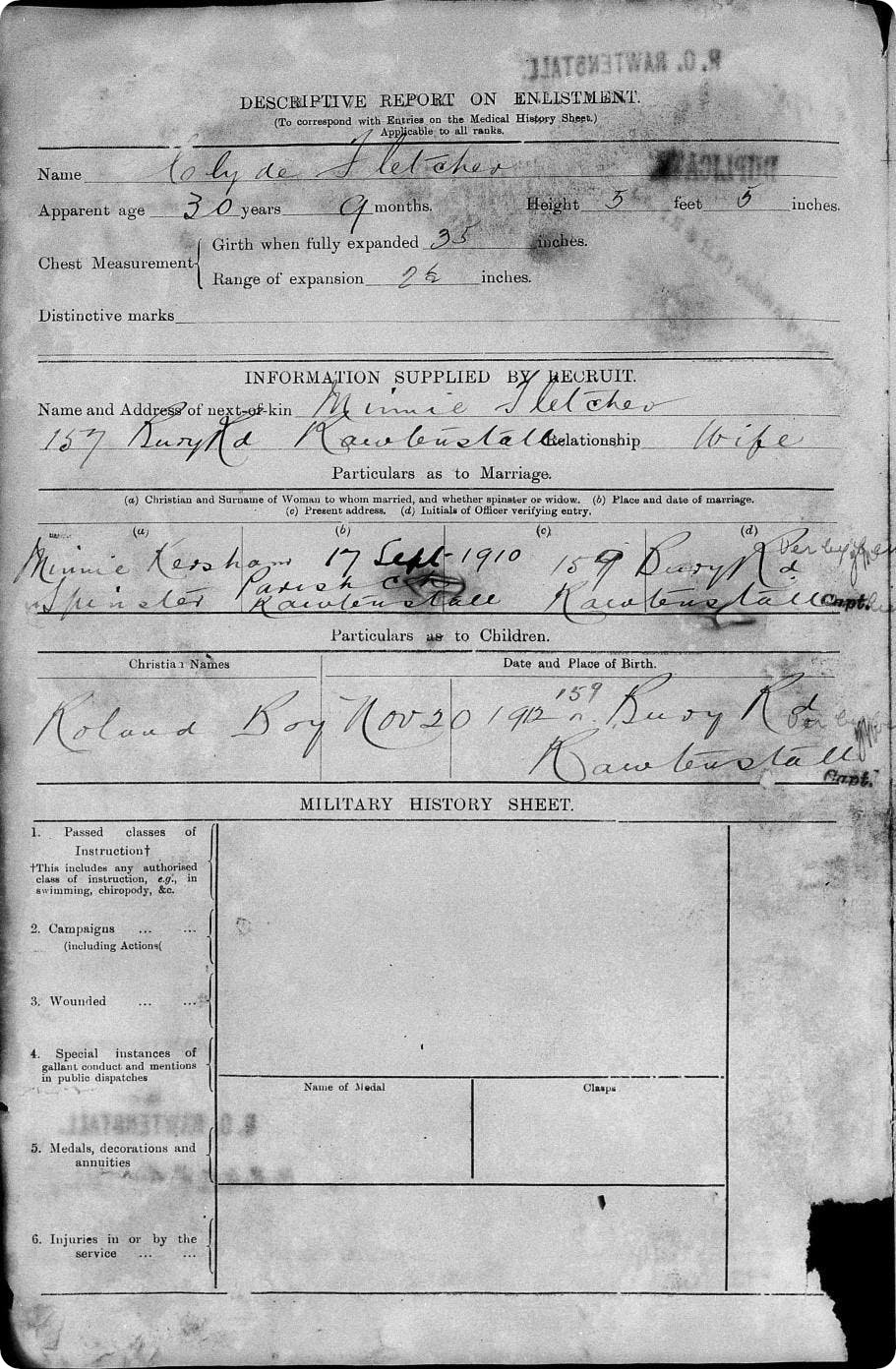
The same page of a soldier's enlistment before the damage was done to the document, British Army Service Records, Findmypast subscription database, accessed June 2017.
Although it is rare to find two copies of the same document in a file, this is a good reminder to check every page before moving on to the next record set.
Digital copies of documents are a valuable and an exciting find for genealogists. Sometimes the documents themselves pose additional obstacles to our research when they have difficult-to-read handwriting, are in an unfamiliar language, or have suffered damage. By taking the time to learn how to read old handwriting, familiarize ourselves with abbreviations and specialized language, and using every available piece of information on the page, we can still gather much important information about our ancestors, even in less-than-ideal conditions.

Related articles recommended for you

The real story of the Battle of Trafalgar
History Hub

The shocking real story behind the Mitford Sisters TV show Outrageous
History Hub
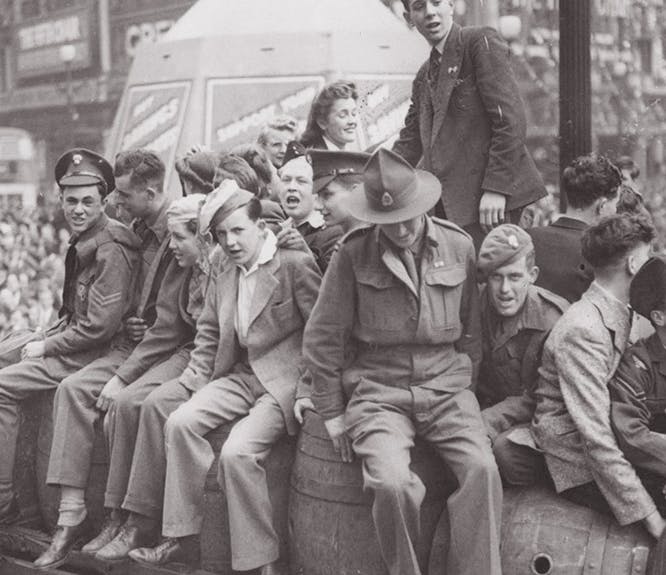
This is what it was like to be in London on VE Day in 1945
The Findmypast Community

